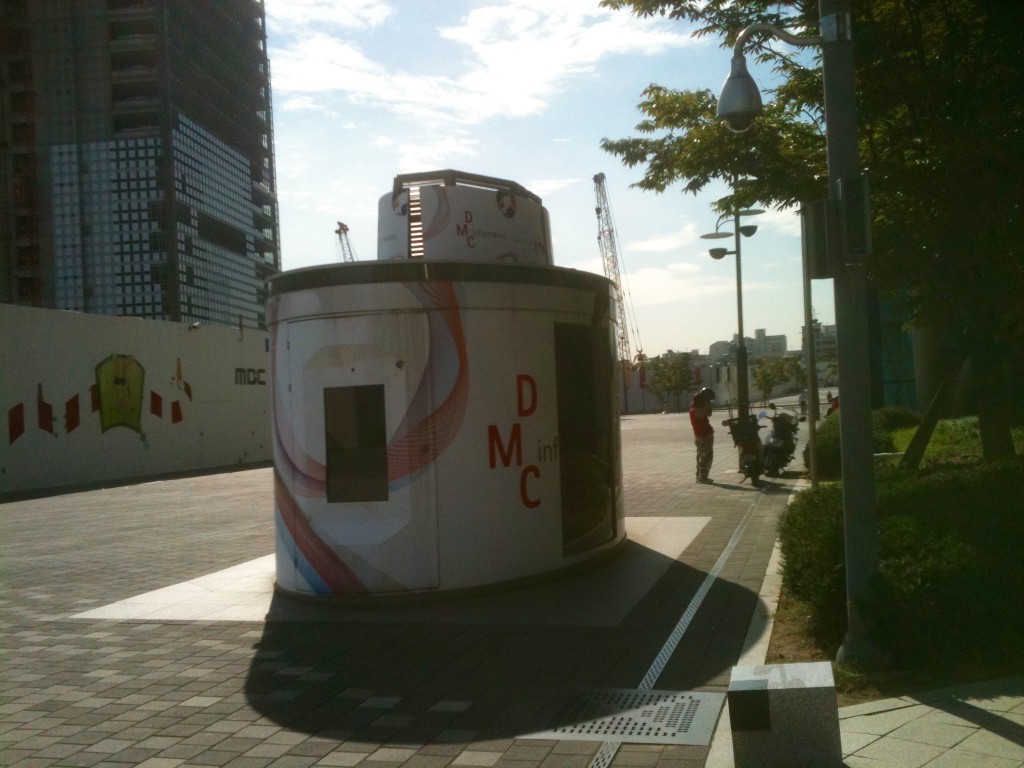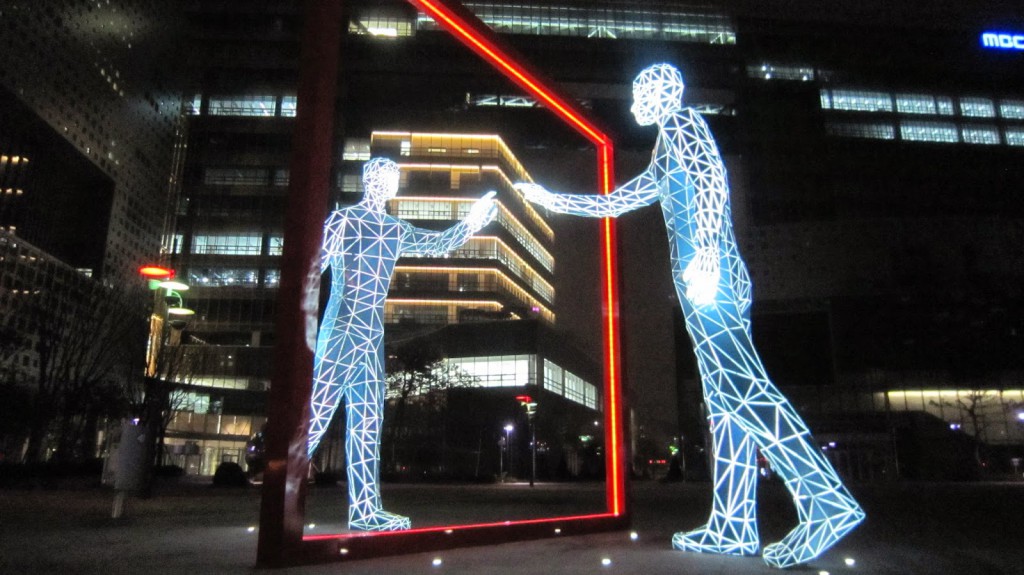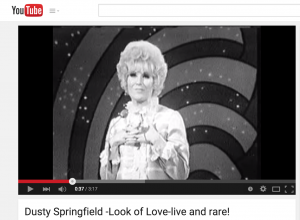Thoughts on English Literacy and Popular Culture in South Korea
 Post by D. Elizabeth Cohen, Gyeongju University
Post by D. Elizabeth Cohen, Gyeongju University
This post is part of a partnership with the International Journal of Cultural Studies, where authors of newly published articles extend their arguments here on Antenna.
In the five years that I have been living in South Korea, I have noticed an amazing amount of variety in attitudes and practices regarding the inclusion of the “foreigners” – of which I am one – increasingly sharing the country. One thing is for sure: Korea’s is not a monolithic society. In my article that appeared in the September 2014 issue of the International Journal of Cultural Studies, I wrote about the gap that occurred between the originally envisioned Digital Media City (DMC) and what actually resulted. DMC is a creative industries ICT (information and communication technology) cluster, originally planned as a creative cluster to foster the creative economy in Korea through an open environment and free exchange between locals and internationals. In my article I noted that while DMC is successful by many standards, this free exchange has not occurred and pointed to the lack of English signage at DMC as an indicator.
As a second generation American growing up in a home with two languages – one used by the adults to keep secrets from “the kids” – I am sensitive to the power of language both to exclude and to include. What I noticed at DMC – among other proper and prestigious Korean institutions – most with international aspirations and world-class pretensions – is a lack of bilingualism and the inclusion that would result. I simultaneously observed in down-to-earth organizational settings more representative of Korea’s usual homey kind heartedness, an attempt to accommodate “the other” through the use of English. Two examples: a yoga class I attended that was my life line while in Seoul, and a cultural symposium dedicated to the topic of Korea’s “comfort women.” Some forward-thinking sectors of Korean society “get” the importance of bilingualism for inclusion, and other more traditional thinkers really don’t – even, surprisingly, in the reverse (that is, the need to provide translation to make English environments more inclusive of Koreans).

I concluded in my article that because DMC’s planning occurred at an unusual time in Korea’s history – influenced by IMF mandates in the late 1990s – this accounts at least partially for the implementation disconnect. Something else I might have pointed out is that creating internationalization through an engineered creative cluster is far from a paint-by-the-numbers affair. The plan might have been half-baked from the outset, less the fault of the South Korean planners than the MIT consultants on whom they relied.
But while DMC has only fulfilled its envisioned internationalization role in a limited way, I like to think that internationalization in South Korea is slowly evolving in smaller, more humble settings – like my classroom – using popular culture artifacts! What never could have been predicted at the time of DMC’s planning would be the emergence of YouTube and its tremendous power for globalization and internationalization*. I now make extensive use of YouTube’s resources in my Literacy and Internationalization university classes in the heritage city, at which I now teach after leaving the Communication department at my former well regarded Seoul university.

Digital media from YouTube is a form of globalization that young Koreans wholeheartedly embrace. There is a huge gap in Korea between young and old – a subject for another blog piece – and young Koreans are in general more welcoming of internationals. But overall, young people reject the English learning imposed upon them by their elders, perhaps reflecting a mistrust of the instrumental motives of improving the Korean economy through the ability to provide a cadre of faceless but impeccable English speakers.
In contrast, watching quality 20th century Western media on YouTube adds value to the individual lives of Korean young people – not just for their artistry and entertainment value but also for the communication of ethics and democratic values. This media offer students a personal reason to want to learn English. A true fan, I get a big kick out of watching my students’ reactions as I share gems such as Judy Garland’s “Somewhere Over the Rainbow” from the Wizard of Oz, Earth Wind and Fire tunes and performances, and archive-grade A-Train music videos. It is a privilege to equip aspiring design, musical and dramatic artists with stellar resources from which they can draw inspiration and improve their craft. It’s a do-it-yourself museum, and I’m the curator! Students get excited by these materials, and it motivates them to communicate. Where once they were shy, they now want to share their opinions – and they’ll do it in English if necessary.
 Sharing these videos provides me with personal gratifications as well. As a child of the 1960s who once dismissed Dusty Springfield in favor of bigger ticket performers like The Beatles and Rolling Stones, my students’ admiration for her rendition of “Look of Love” caused me to give her and her body of work a second look that was enriching. And in watching and discussing gems from YouTube with my students, I get to be a Mom for the second time having the pleasure of witnessing the world once again through the eyes of my one-semester-only offspring.
Sharing these videos provides me with personal gratifications as well. As a child of the 1960s who once dismissed Dusty Springfield in favor of bigger ticket performers like The Beatles and Rolling Stones, my students’ admiration for her rendition of “Look of Love” caused me to give her and her body of work a second look that was enriching. And in watching and discussing gems from YouTube with my students, I get to be a Mom for the second time having the pleasure of witnessing the world once again through the eyes of my one-semester-only offspring.
While viewing YouTube videos in a classroom is mostly a one-way cultural exchange, and doesn’t fulfill the two-way free exchange aspirations of the architects of DMC, it is a step in the right direction of the evolving process of internationalization that does not seem to happen easily anywhere in the world. Why should it be different in South Korea?
The popular culture resources now available on YouTube are Western ambassadors that can bring great value to others around the world. Such media can be used for many educational and cultural purposes – not only to promote English literacy abroad – but within American shores as well. They are an inestimable treasure that shouldn’t be taken for granted.
* There is a connection between DMC and YouTube; some commercial content creators for YouTube are in residence at DMC where they develop and distribute digital content
[For the full article, see D. Elizabeth Cohen, “Seoul’s Digital Media City: A History and 2012 Status Report on a South Korean Digital Arts and Entertainment ICT Cluster,” forthcoming in International Journal of Cultural Studies. Currently available as an OnlineFirst publication: http://ics.sagepub.com/content/17/6/557.abstract]
Correspondence: DrDElizabethcohen@cognition-ignition.com


